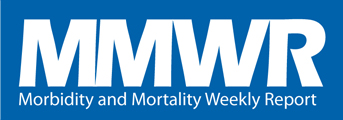MMWR News Synopsis for July 2, 2015
Monitoring of Persons with Risk for Exposure to Ebola Virus Disease — United States, November 3, 2014–March 8, 2015
CDC Media Relations
404-639-3286
U.S. jurisdictions demonstrated the capacity for a complex public health response monitoring thousands of persons at risk of exposure to Ebola over approximately four months. The 2014-2015 Ebola epidemic in West Africa is the largest ever reported leading to concerns of potential Ebola transmission within the United States. On October 27, 2014, CDC issued guidance on the monitoring and movement of persons in the U.S. who potentially had been exposed to the disease. Monitoring aims to rapidly identify symptomatic persons so they can be isolated, tested, and, if necessary, treated to improve their chance of survival and reduce transmission. The 50 states, New York City, and Washington DC implemented the guidelines within seven days and monitored 10,344 persons from November 3, 2014–March 8, 2015 with over 99% completion. No persons under monitoring were diagnosed with Ebola. This response provided evidence for the capability of U.S. state, territorial, and local health departments to rapidly and successfully initiate a nationwide monitoring system.
Sodium Intake Among U.S. Adults — 26 States, the District of Columbia, and Puerto Rico, 2013
CDC Media Relations
404-639-3286
With more than 9 out of 10 U.S. adults eating too much sodium, the findings suggest a significant proportion of adults are ready for sodium reduction. The study also reveals opportunities for healthcare professionals to advise patients on limiting salt in the diet. Based on a 2013 phone survey of more than 180,000 adults across 26 states, DC and Puerto Rico, CDC research reveals that just over half of U.S. adults reported taking action to watch or reduce sodium intake – while one in five say they have received professional medical advice to reduce sodium intake. Compared to people without hypertension, a higher percentage of individuals with self-reported hypertension claim to have taken steps to watch or reduce sodium and receive advice from a professional healthcare provider. Generally, higher proportions of respondents in the South reported taking action or receiving advice from healthcare professionals to reduce sodium intake. This is the first report to provide state-level estimates of sodium intake behavior among general population.
Introduction of Inactivated Polio Vaccine and Change from Trivalent to Bivalent Oral Poliovirus Vaccine — Worldwide, 2013–2016
CDC Media Relations
404-639-3286
Based on a 2013 phone survey of more than 180,000 adults across 26 states, DC and Puerto Rico, CDC research reveals that just over half of U.S. adults reported taking action to watch or reduce sodium intake – while one in five say they have received professional medical advice to reduce sodium intake. Compared to people without hypertension, a higher percentage of individuals with self-reported hypertension claim to have taken steps to watch or reduce sodium and receive advice from a professional healthcare provider. Generally, higher proportions of respondents in the South reported taking action or receiving advice from healthcare professionals to reduce sodium intake. This is the first report to provide state-level estimates of sodium intake behavior among general population. Spread of wild poliovirus has been interrupted in almost all countries. No polio cases caused by wild poliovirus type 2, one of the three poliovirus types, have been identified anywhere since 1999. This progress has been achieved with oral poliovirus vaccine (OPV), primarily trivalent OPV that protects against types 1, 2, and 3 polioviruses. However, OPV polioviruses can undergo genetic changes during replication, and in extremely rare circumstances in areas with low vaccination coverage, such changes can result in vaccine-derived polioviruses capable of causing paralysis. While use of trivalent OPV has prevented millions of paralytic polio cases from wild polioviruses since 2006, during that time approximately 670 cases of polio have been caused by circulating vaccine-derived poliovirus type 2. Since the world is nearing the eradication of all wild polioviruses, and because eradicating polio requires eradicating both wild and vaccine-derived polioviruses, even the extremely small risks from continued use of trivalent oral polio vaccine have begun to outweigh its benefits. These risks can be substantially reduced further by replacing trivalent OPV with bivalent OPV, which contains only weakened types 1 and 3 polioviruses. Such a replacement will be most effective if all countries using trivalent OPV simultaneously switch to bivalent OPV. Consequently, a global switch from trivalent OPV to bivalent OPV has been scheduled for April 2016. This global, synchronized switch will affect all 156 countries currently using or stockpiling trivalent OPV and will be one of the largest coordinated public health efforts in history.
Monitoring Exposure to Ebola and Health of United States Military Personnel Deployed in Support of Ebola Control Efforts — Liberia, October 25, 2014–February 27, 2015
Todd J. Vento
Brooke Army Medical Center
(210) 916-5554
(210) 589-5418
Email: todd.j.vento.mil@mail.mil; yo.vento@gmail.com
U.S. military personnel constitute a unique population working in Ebola-affected countries because of their activity restrictions and aggressive monitoring; knowledge of these measures might better inform clinical decision-making for these returning U.S. travelers and increase public awareness about their low exposure risk. U.S. military personnel deployed to Liberia in support of Ebola control efforts were subjected to stringent activity restrictions and twice-daily monitoring for fever, exposure to Ebola, or Ebola symptoms. Among approximately 2,500 deployed personnel, 32 had a febrile illness, including five who were identified through leadership-directed unit monitoring. The most frequent diagnoses were gastrointestinal, respiratory, and dermatologic conditions. No febrile person had contact with an Ebola-infected patient and no documented Ebola exposures or infections occurred among U.S. service members while they were in Liberia or after returning to the United States.
###

